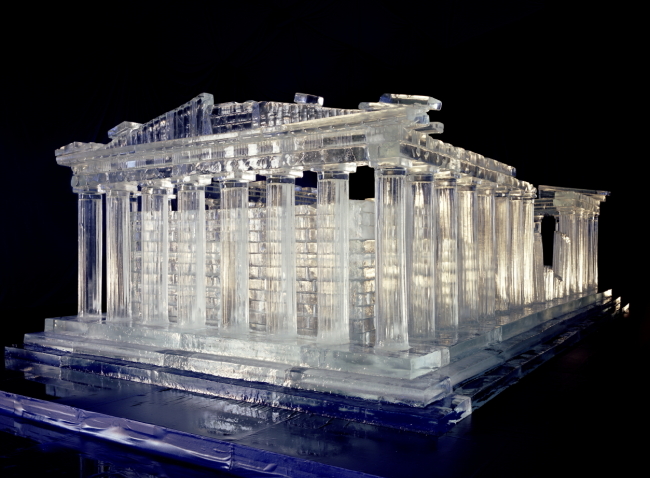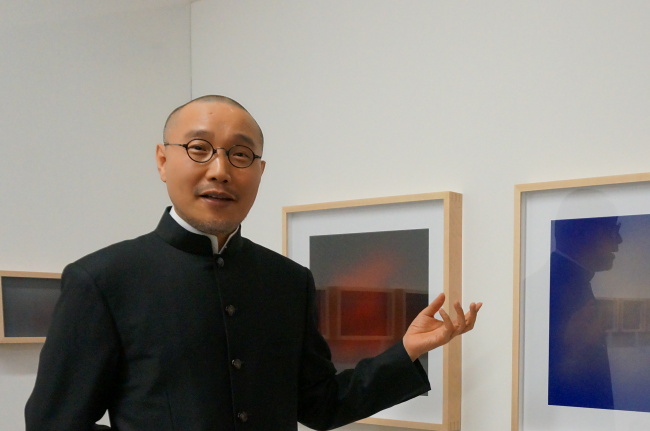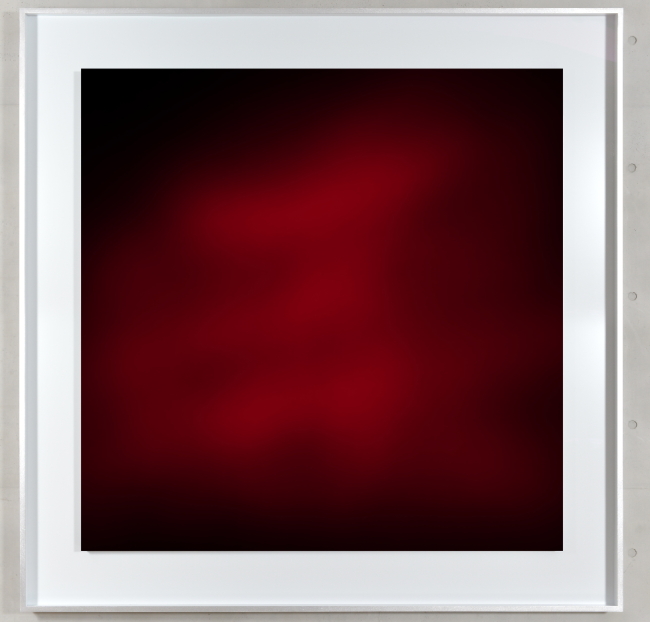Philosophical artist searches for the fundamentals of existence in the last stage of his long-running photographic series, and explores the perception of time and space
 “ON-AIR” 153-1 by Atta Kim (313 ART PROJECT)
“ON-AIR” 153-1 by Atta Kim (313 ART PROJECT)
Photographer Atta Kim, whose innovative, striking photographs have received much attention in the global art community, will return with a solo exhibition this week in Seoul, breaking his six-year hiatus in the Korean art world.
Kim will present new images to wrap up the “On-Air” project that won him worldwide attention, as well as his previous works and introduce another ambitious, philosophical project at his upcoming exhibitions scheduled to be held in three parts for two years in his native country.
Using long exposure, which can last as long as eight to 24 hours, and other unprecedented methods, Kim has gone beyond the traditional definition of photography, which is the recording of a moment, and extended its domain to a means to express philosophical thinking in photographic images.
The deserted images of metropolises such as New York, Beijing and Paris that he photographed with an eight-hour exposure have made the figures of moving objects look like dust, leaving only immovable objects, such as concrete buildings, streets and skies, identifiable. The photograph of naked people posing inside Plexiglas boxes for a museum display was a fresh surprise to the world of photography as well. Creative ideas and imaginative ways of presentation led Kim to become the first Asian photographer to be featured in the exhibition at the International Center of Photography in New York and invited to the Venice Biennale in 2009.
As the long-running project nears its end, his pictures have shown more monotony in style and profundity in thought.
“I am looking for something void. What I have been searching for is the fundamentals of objects and this is the result of what I have been looking for,” Kim said in his studio in Paju on Friday, pointing to a gray rectangle image, which results from overlapping 10,000 photographs of New York City.
“This is the most difficult work I’ve ever done, but I consider it the most representative works of mine because it shows hidden qualities that cannot be seen with the naked eye,” Kim noted.
 Artist Atta Kim explains his photographs at his studio in Paju on Friday. (Lee Woo-young/The Korea Herald)
Artist Atta Kim explains his photographs at his studio in Paju on Friday. (Lee Woo-young/The Korea Herald)
Kim also attempted to leave viewers in the dark about the source of images in the case an artwork of ancient books that impressed him philosophically. He took a photo of every word of 15,817 contained in the Confucius Analects and turned their photos into a single image. The final result he got looks like an abstract painting.
 “ON-AIR Project, Analects of Confucius, 15,817” by Atta Kim (313 ART PROJECT)
“ON-AIR Project, Analects of Confucius, 15,817” by Atta Kim (313 ART PROJECT)
Unexpectedly, though, what has taken up the largest part of his studio were not photographs but large fabric ripped into pieces that were solemnly hung. His new art series “The Drawing of Nature” is not images of moments captured through a camera lens, but recordings of layer of time on white cloth.
Under the new project he describes as the drawing “by” nature, he sets up canvases at historic or meaningful places like the De-Militarized Zone that divides the North and South Korea, Henan Sheng in China, which is known as the birthplace of the Chinese civilization, or the Bhuddha Gaya in India, famous as a place where Buddha was enlightened. He even takes the canvas to extreme settings such as underground or under the sea and a military shooting range in South Korea.
“I could stand in these places for two years, but since I can’t do it. I use the white canvas as litmus paper, an indicator of a character of the place,” he said.
The state of the canvases varies. The one installed under the sea is torn apart in the middle after braving several typhoons and the one buried under the ground were in many small pieces as a sign of decomposition. The ones installed in cities show different stains.
“The canvas installed in the Native American reservation area in the U.S. were really clear even a year after it was installed, but some canvases in other cities were really featured different images,” said Kim.
Kim is waiting for the approval to install a canvas at Auschwitz Concentration Camp and console its soul by placing a canvas in Gombaeryong, a place in Korea known for a variety of wild flowers in a future exhibition. “Because I believe art can heal wounds,” he said.
The first exhibition will be held from Jan. 9 to Feb. 7 at 313 ART PROJECT in Dosandaero, Gangnam, Seoul. For more information, call (02) 3446-3137.
By Lee Woo-young
http://www.koreaherald.com/view.php?ud=20140105000224